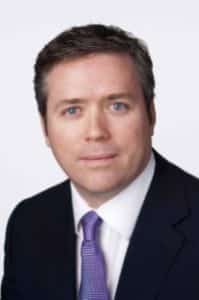The Citi never sleeps.

Tim Gately, Citi
And to hear Tim Gately, Citi’s U.S. Head of Equities tell it, things have been busy at 388 Greenwich Street aside from a new corporate headquarters facade. In a recent visit to Citi, Gately sat down with Traders Magazine to discuss trading, market structure, and what’s new at the bulge-bracket bank.
Is it good to see volatility return to the market?
Absolutely. We have a good environment for trading now. Volatility creates more opportunity because clients have to be more active in managing their portfolios and understanding changes in the market. We are there to provide solutions, execution and advice, three things we feel we do pretty well. So, that works quite well. It also creates uncertainty and you have to be very disciplined around managing the risks and staying on top of the situations, but that’s part of the DNA around here so we’ve definitely viewed it as a good opportunity for us.
Have you had to comfort investors who may have forgotten what volatility was?
To see it peak up is a great thing. But we need to remember that volatility is only around the 14 level here, not particularly high by historical standards. For some investors, this is their first exposure or taste of market volatility. But, the volatility is creating a lot of dialogue, which is always a good thing. Clients are calling and asking what we’re seeing, what’s going on, etc.
So what are you doing to assist clients?
One of the things we’re really seeing now is a pick-up of business in our advisory solutions side. There is certainly a lot of discussion around liquidity and how do you access liquidity in the market, particularly as we’ve seen some decent gaps in relatively short time frames. The ability to monetize that market movement or trade around that is challenging.
Relatively speaking, the market is still thin, particularly when volatility gaps higher.
Has the increase in volatility boosted volumes?
Volumes do generally pick up but you also see gaps in prices and retracements which at times allow little opportunity to monetize positions. You also have to differentiate between index and futures volumes, which tend to spike during volatility, relative to single stock or options.
Do you think the market is strong fundamentally?
We’ve done a lot of research and published a lot of work across our fixed income and equities teams. It’s clear we’re seeing a rise in the rate environment which tends to have a negative impact on credit and other fixed income products. But that actually doesn’t mean it’s negative for equities. With strong earnings, buy-backs and global economic growth equities have scope to outperform in a rising rate environment.
How has Citi been building out its business?
We have been expanding on all fronts. In cash, we have been investing in our electronic platform, in both traditional Electronic Execution and Quant Prime Brokerage. We have introduced new products across our execution strategies such as P10 conditional orders. We expect to see a continued trend towards hybrid execution across both High Touch and electronic. In Derivatives, we have been hiring in our distribution, structuring and trading teams, as well as growing nicely in Citi Investment Strategies and custom basket products to complement our traditionally strong flow franchise. In Delta 1, we continue to be one of the fastest growing franchises, adding resources in trading and client coverage and growing all parts of the business.
The high-touch and low-touch desks are separate but work together?
What we are trying to do is automate these workflows as much as possible to allow the traders and sales traders to become more of a value-add proposition so they can work on sourcing the larger blocks or the less liquid pieces. This will continue to push that channel shift toward hybrid. And with our forecasts for continued asset management base growth and the shift towards more passive asset management puts us in a good spot.
Are you expecting more passive asset management to grow the business?
Yes. If you think globally about the rise of the middle class and what that means for pensions and liability management, you’re going to see the equity universe grow substantially. Now that doesn’t mean developed markets are going to be growing in multiples. But you’re going to see emerging market investors and other markets grow too. And we expect more and more of that new money to end up in the passive universe.
What are some of your bigger challenges?
Navigating the change in market landscape, data governance, competition for talent to name a few.
Are you hiring? There have been some high-profile departures of late.
We’ve been making a big push into equities and we’re investing money into the business through technology and new hires. We’ve brought-in Tom Chippas who heads quant execution, and hired George Sohos to run our central risk quantitative platform. Christophe Pochart joined recently to run our Multi Asset Group and co-head derivative sales in the region, a number of others are in the works across the floor as well.






